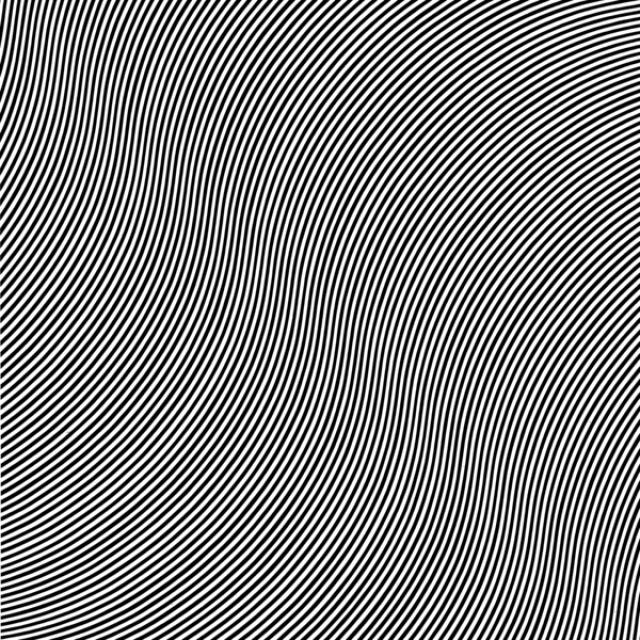Op Art
Op Art was an international art movement which came to prominence in the 1960s, exploring the ways abstract pattern, colour and form can stimulate the eye.

What is Op Art?
Op Art is an abbreviation of ‘optical art’ and the term came into regular use in the mid-1960s. The style is characterised by abstract patterns, often in black and white, with a stark contrast between background and foreground. Resulting images stimulate the eye and create sensations of swelling, warping, flashing or vibrations, sometimes causing unsteadiness and afterimages.
The origins of the term Op Art
Time Magazine coined the term in 1964 in response to the work of French-Hungarian artist Victor Vasarely, who is often referred to as the ‘grandfather’ of Op Art. Vasarely was one of the first to explore the ‘Op’ style in his paintings in the 1930s, bringing together interests in science, colour and optics at a time when advances in computing, aerospace and television were being made. By the mid-1950s Vasarely was producing complex geometric paintings with disorientating effects such as TaÏmyr, 1958 (pictured below). In his Planetary Folklore series from the 1960s he created a ‘plastic alphabet’ of coloured shapes arranged into grid-like forms that seem to move across the picture plane. Vasarely wrote:
‘To experience the presence of a work of art is more important than to understand it.’
Op Art and Kinetic Art
Op Art emerged concurrently with Kinetic Art; both were launched at Le Mouvement, a group exhibition at Galerie Denise Rene in Paris in 1955. Both styles were celebrated in the international survey exhibition in New York, The Responsive Eye in 1965. Op and Kinetic Art shared a fascination with motion, although where Op artists explored how virtual movement could be created on a flat plane, Kinetic artists were preoccupied with real movement in space. After 1965 the Op style began appearing in graphics, advertising and design.
Bridget Riley and George Seurat
Although considered a relatively new style of art, Op had its origins in various sources, from fifteenth century linear perspective, where objects were painted smaller to appear further away from the viewer, trompe l’oeil, where artists tricked the eye by painting objects to look three-dimensional, or anamorphosis , where a distorted image could only be seen in its true shape when viewed through a device or from a certain vantage point .
In the 1880s Georges Seurat was influenced by French chemist Michel-Eugene Chevreul’s colour theory and explored a rigorous approach to optics by placing unblended colours alongside each other to ‘blend’ in the eye. British artist Bridget Riley was particularly drawn to Seurat’s ‘heat haze’ vibrations, which she explored in a pattern based style reminiscent of traditional parlour games. During the 1960s Riley began painting the black and white works which characterise her style, such as Over, 1966, in which a curved line is repeated in varying frequencies to create a shimmering optical effect. She said:
‘There was a time when meanings were focussed . . . when that sort of belief disappeared things became . . . open to interpretation.’
Other Op artists include Frank Stella, Carlos Cruz-Diez, Jesus Rafael Soto and Josef Albers.
Influence of Op Art on contemporary artists
Many art critics were opposed to Op Art, dismissing it as commercial, ‘retinal titillations’. Nonetheless its influence on contemporary art practice continues, as seen in the work of American artist Philip Taaffe and British artist Richard Wright. The style also provides material for neuroscientists exploring the ways the eye can process lines, forms and colours.


